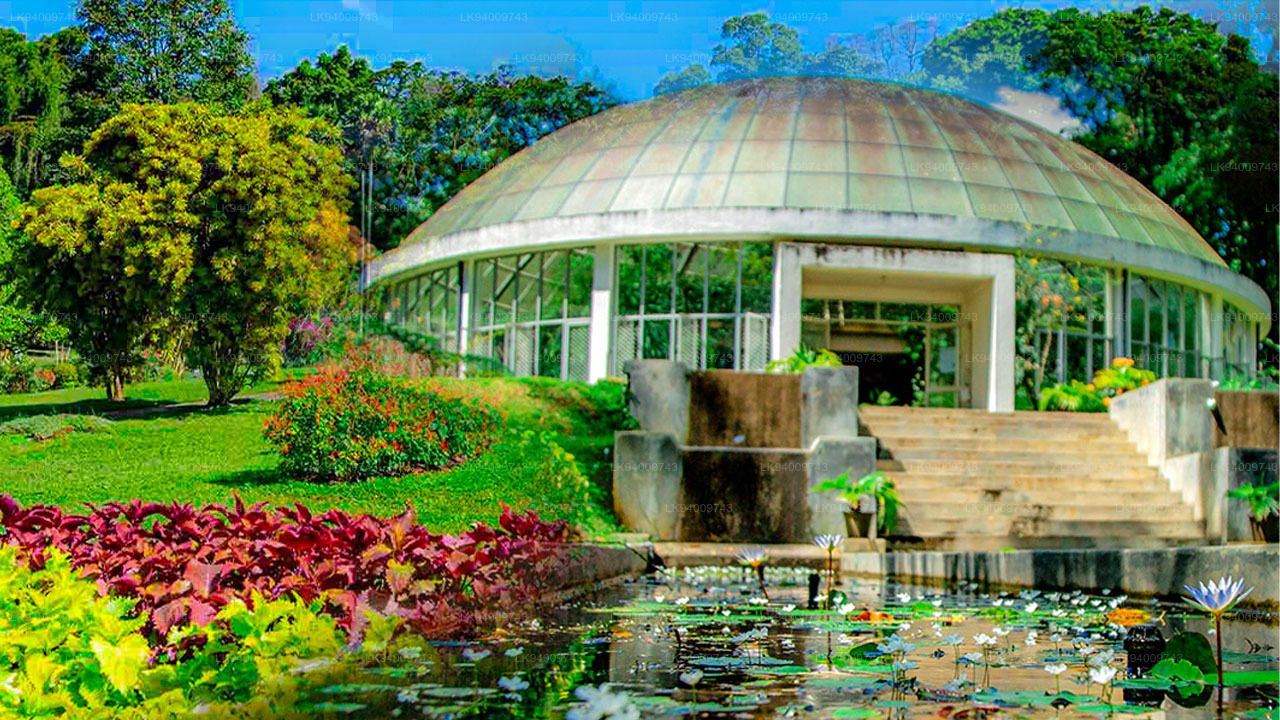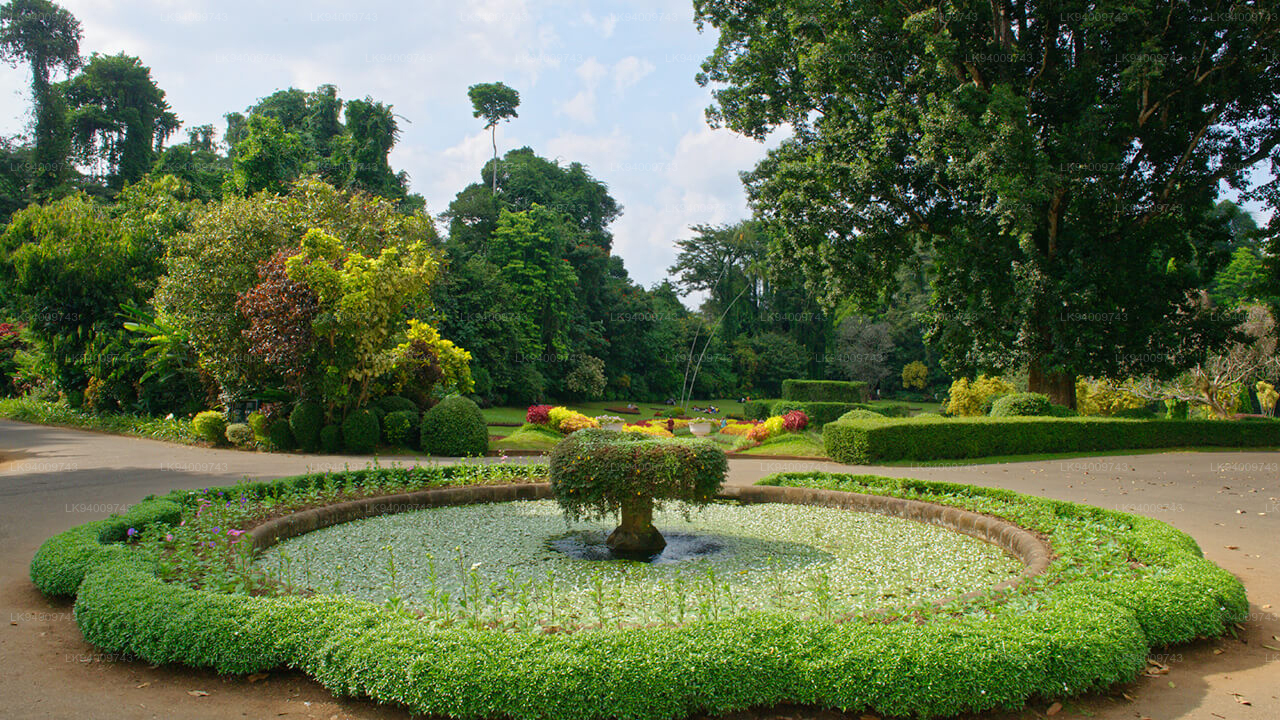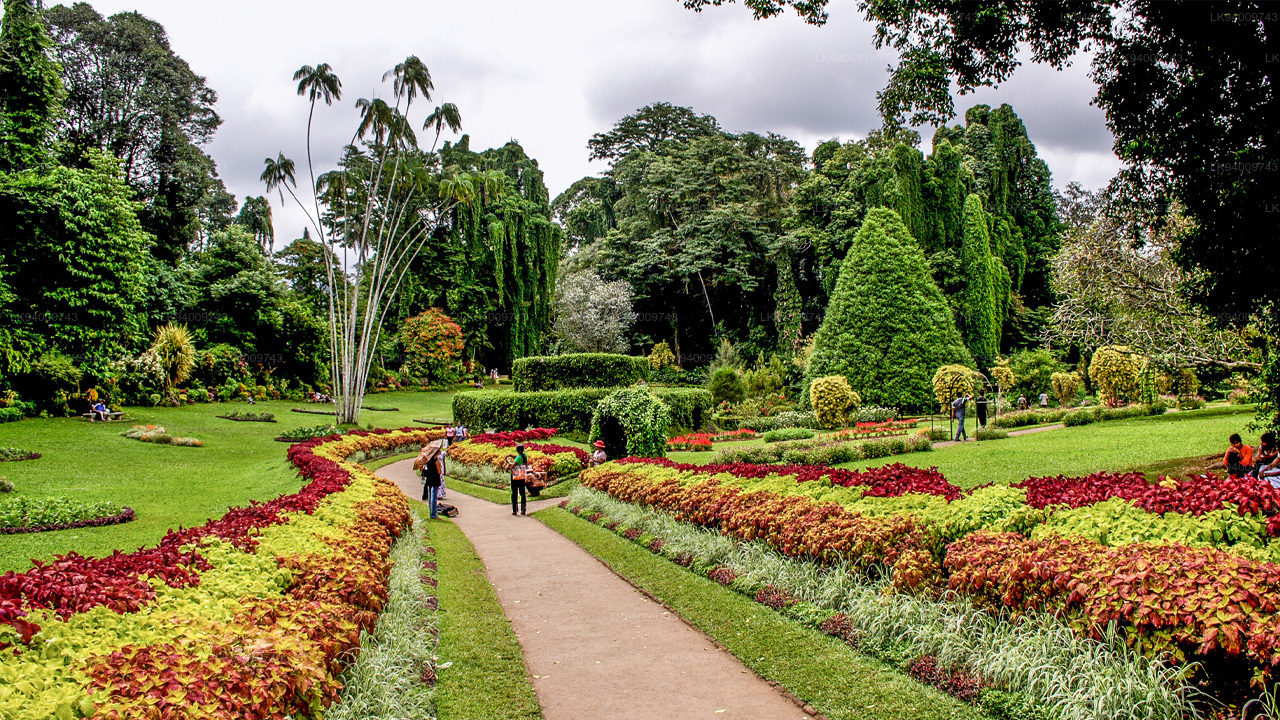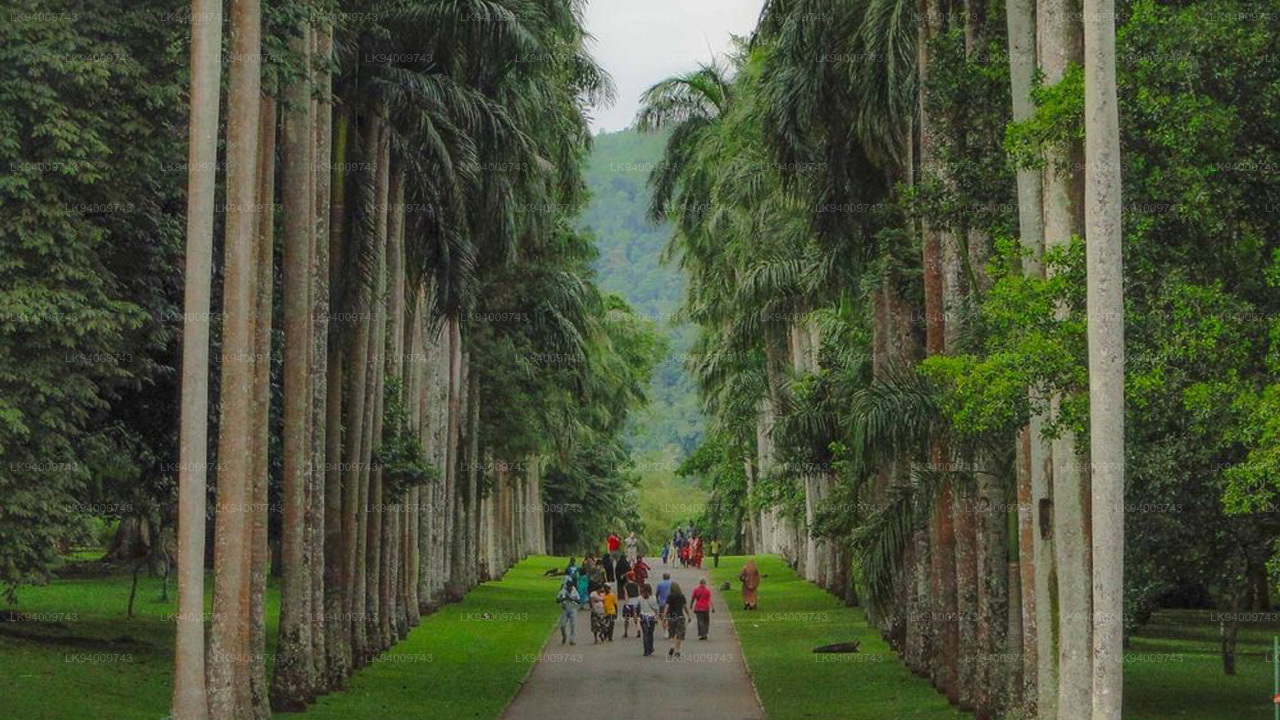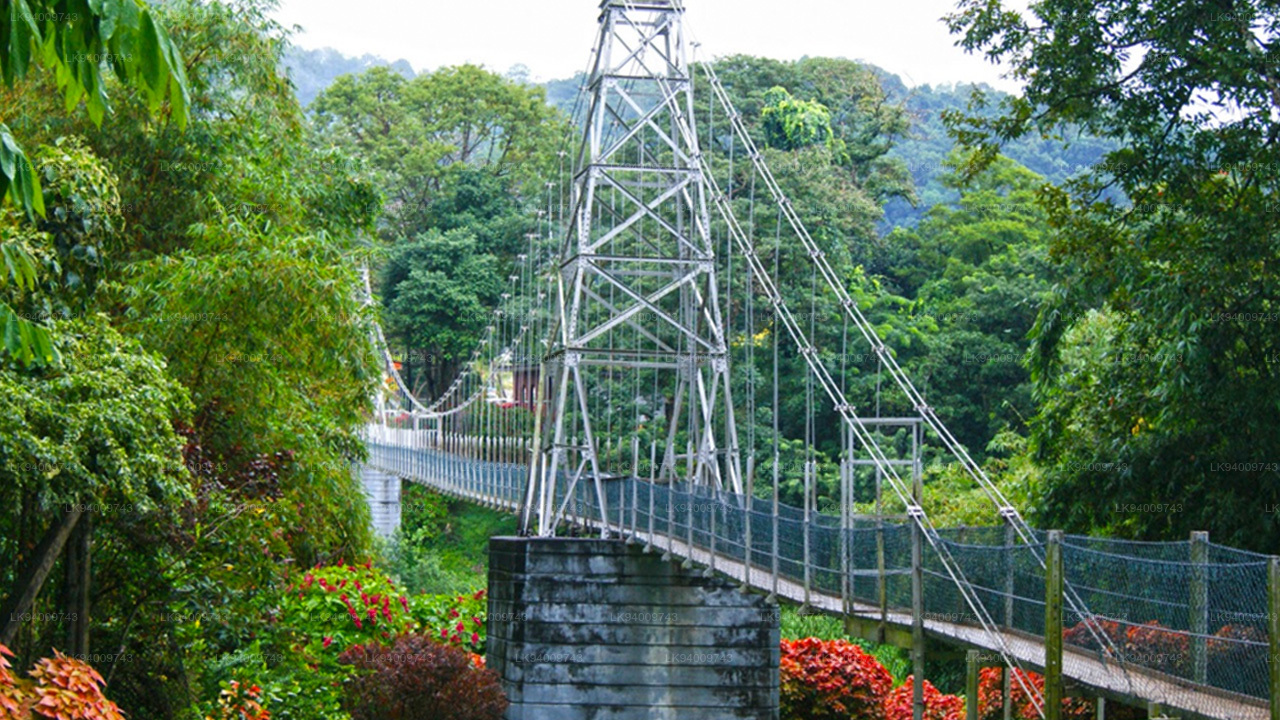
캔디 시티
스리랑카 중부의 그림 같은 도시 캔디는 풍부한 문화 유산, 활기찬 축제, 그리고 아름다운 자연 경관으로 유명합니다. 울창한 언덕에 자리 잡은 캔디는 유네스코 세계문화유산으로 지정된 불치사(Temple of the Tooth Relic)가 있는 곳으로, 역사와 아름다운 자연이 어우러진 매혹적인 도시입니다.
Peradeniya Royal Botanical Garden
Botany is the scientific study of plants. There are over 315,000 plant species around the world. The number continues to increase as new species continue to be discovered. Botanical gardens aim to collect, cultivate and display as many plants as possible, all labelled under their botanical names.
5 Common Things about all Botanical Gardens
- They often contain plants from all over the world, as well as specialist collections such as cacti or orchids.
- There may be special climate controlled areas such as Greenhouses or Shadehouses, with special collections such as tropical plants or alpine plants.
- Botanical gardens host tours, art exhibitions, theatrical and music productions, educational displays and other entertainment.
- They are often run by universities or research organizations.
- Botanical gardens usually run research programmes in some aspect of botanical science.
The Beginnings of Botanical Gardens
Botanical Gardens began their life as medieval medicinal gardens called ‘physic gardens’ in Europe. They were initially founded in the 16th century during Italian Renaissance period though some records prove the existence of small scale physic gardens as early as the 14th century.
As botany was established as a subject separate from medicine in the 17th century, plant imports from explorations around the world began to be cultivated. During the 18th century proper methods plant classification and cultivation of foreign plants became known and many botanical gardens were established in tropical countries. The Royal Botanical Gardens in Kew near London played a central role in uniting the various botanical researches being conducted in the other gardens.
As the years have passed botanical gardens have taken a major place in culture and botany. They have been places of great advances in science and horticulture.
The Royal Botanical Gardens, Peradeniya, Sri Lanka
Base Facts
Name Royal Botanical Gardens Founding year 1821 Placement 5.5 km West of Kandy in the Central Province Average Visitors per year 2 million Approximate number of plant species Over 10,000 including 4000 labelled species Total Area 147 acres Height above sea level 460m Number of Days of Rainfall per year 200 Managed by Division of National Botanical Gardens of the Department of Agriculture.
10 Interesting Things you should know about the Royal Botanical Gardens of Peradeniya
- It is the best botanical garden in the whole of Asia.
- The gardens are attached to the National Herbarium of Sri Lanka.
- The Orchid House with its large variety of orchids are highly reknowned.
- Before the botanical gardens were formed, the place was the court of King Wickramabahu III in 1371.
- Later a temple was built on the site, but was destroyed by the British.
- Alexander Moon began the initial groundwork for the gardens in 1821, when he used it for the cultivation of cinnamon and coffee.
- The garden was formally established in 1843 with plants brought in from Royal Botanical Gardens in Kew, Britain.
- The gardens came under thepurview of the Department of Agriculture in 1912.
- The gardens include the historical Cannonball Tree planted in 1901 by King George V and Queen Mary of the United Kingdom.
- The Royal Botanical Gardens of Peradeniya was used as the SouthEast Asian Headquarters of the Allied Forces during the Second World War.
Please contact Lakpura for more information on visiting the Royal Botanical Gardens of Sri Lanka.
캔디 지구 소개
캔디 지구는 스리랑카 중부 지방에 위치하고 있습니다.스리랑카의 7개 세계문화유산 중 하나인 캔디는 16세기에 옛날 캔디 왕조의 왕들이 살았던 곳이자 나라의 모든 음악, 예술, 공예, 문화의 원천이었습니다.콜롬보에서 약 129km 떨어진 캔디는 구릉 지대에 자리 잡고 있으며 모든 시선은 캔디 호수가 매력적인 특징을 이루는 도시 중심부로 쏠립니다.캔디는 스리랑카에서 큰 종교적 의미를 지니고 있는데, 이 매력적인 도시에 달라다 말리가와 또는 "치아 사원"이 있고, 그 안에 부처님의 신성한 치아 유물이 잘 보관되어 있기 때문입니다.페라데니야 왕립 식물원은 페라데니야 시내 중심에서 서쪽으로 약 5km 떨어진 곳에 위치하고 있으며, 매년 120만 명이 방문합니다.섬에서 가장 큰 식물원입니다. 우다와타 켈레(우다와타 숲)는 도시 중심부, 불치사 바로 북쪽에 위치한 보호 구역입니다. 캔디는 싱할라족이 다수를 차지하는 도시이지만, 무어족과 타밀족 등 다른 민족 집단이 거주하는 지역 사회도 상당수 있습니다. 캔디는 스리랑카 경제의 중심지인 콜롬보에 이어 두 번째로 큰 도시입니다. 많은 주요 기업들이 캔디에 대규모 지사를 두고 있으며, 섬유, 가구, 정보 기술, 보석 등 다양한 산업이 이곳에 자리 잡고 있습니다. 또한, 수많은 농업 연구 센터가 캔디에 위치해 있으며, 전국의 음악, 예술, 공예, 문화의 발원지이기도 합니다. 콜롬보에서 약 129km 떨어진 캔디는 구릉 지대에 자리 잡고 있으며, 모든 사람의 시선은 캔디 호수가 있는 매력적인 도시 중심부로 쏠립니다. 캔디는 스리랑카에서 매우 중요한 종교적 의미를 지니고 있는데, 이 매력적인 도시에 달라다 말리가와(불치사)가 자리 잡고 있으며, 이곳에는 부처님의 성스러운 불치가 잘 보관되어 있기 때문입니다.
중부 지방 소개
스리랑카 중부 지방은 주로 산악 지형으로 이루어져 있습니다. 이 지방의 면적은 5,674km²이고 인구는 2,421,148명입니다. 주요 도시로는 캔디, 감폴라(24,730명), 누와라 엘리야, 반다라웰라가 있습니다. 인구는 싱할라족, 타밀족, 무어족이 섞여 있습니다. 언덕 주도인 캔디와 누와라 엘리야는 모두 중부 지방과 스리 파다에 있습니다. 이 지방은 1860년대에 파괴적인 질병으로 인해 이 지방의 모든 커피 농장이 파괴된 후 영국인이 심은 유명한 실론 차를 많이 생산합니다. 중부 지방은 캔디, 감폴라, 해튼, 누와라 엘리야와 같은 언덕 역 마을이 있어 많은 관광객을 유치합니다. 템플 투스 또는 달라다 말리가와는 중부 지방의 주요 성지입니다. 기후는 시원하며, 해발 1,500m 정도의 많은 지역에서는 종종 밤에 쌀쌀합니다. 서쪽 경사면은 매우 습하며, 일부 지역에서는 연간 강수량이 거의 7,000mm에 달합니다. 동쪽 경사면은 북동 몬순의 영향으로 비가 거의 내리지 않아 중건기 지대에 속합니다. 캔디의 기온은 24°C에서 해발 1,889m에 위치한 누와라 엘리야의 기온은 16°C에 불과합니다. 스리랑카에서 가장 높은 산은 중부 지방에 있습니다. 지형은 대부분 산악 지대이며, 깊은 계곡이 지형을 가로지르고 있습니다. 두 개의 주요 산악 지역은 캔디 동쪽에 있는 중앙 산괴와 너클스 산맥입니다.

